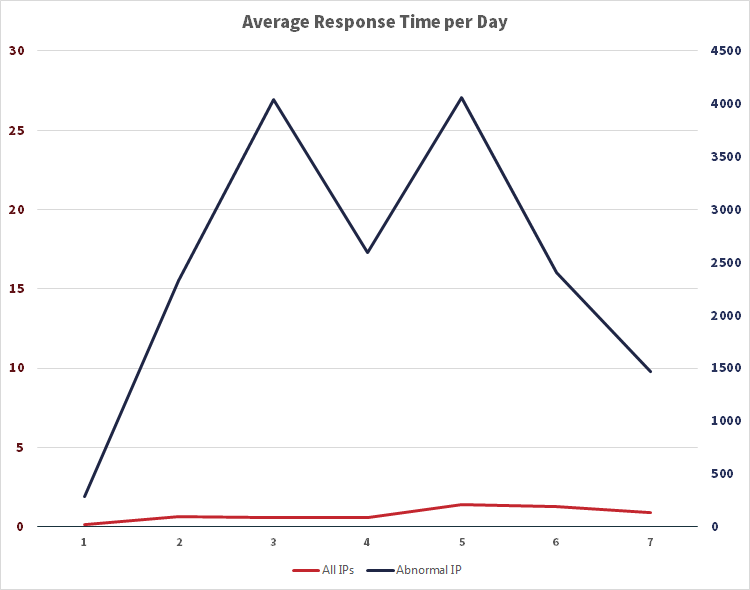The prompt and decision
"As a financial services organisation, information security and system availability are core to the success of our business. With the business growing, we needed a solution that was scalable and which allowed our team to focus on high-value management tasks rather than on data collection and review."
Information security is vital to modern organisations, and particularly for those that deal in sensitive data, such as Netwealth. It is essential to actively assess software applications for security weaknesses to prevent exploitation and access by third parties, who could otherwise extract confidential and proprietary information. Security monitoring looks for abnormal behaviours and trends that could indicate a security breach.
"The continued growth of the business and the increased sophistication of threats prompted us to look for a better way to bring together our security and IT operations information and events," explains Chris Foong, Technology Infrastructure Manager at Netwealth. "Advancements in the technology available in this space over the last few years meant that a number of attractive options were available."
The first stage in Netwealth’s project was to select the right tool for the job, with several options short-listed. Each of these options was pilot tested, to establish which was the best fit to the requirements—and Splunk, with its high versatility and ease of use, was the selected solution.
The power in the solution comes from Splunk’s ability to combine multiple real-time data flows with machine learning and analysis which prioritises threats and actions, and the use of dynamic visual correlations and on-demand custom queries to more easily triage threats. Together, this empowers IT to make informed decisions.
Objective
Netwealth’s business objective was to implement a security information and event management (‘SIEM’) compliant tool to enhance management of security vulnerabilities and reporting. Their existing tool no longer met the expanding needs of the business, and so they looked to Splunk and JDS to provide a solution.
Approach
Netwealth conducted a proof of concept with various tools, and Splunk was selected. JDS Australia, as Splunk Implementation Partner, provided licensing and expertise.
IT improvements
Implementing Splunk monitoring gave Netwealth enhanced visibility over their security environment, and the movement of sensitive data through the business. This enabled them to triage security events and vulnerabilities in real time.
About Netwealth
Founded in 1999, Netwealth was established to provide astute investors and wealth professionals with a better way to invest, protect and manage their current and future wealth. As a business, Netwealth seeks to enable, educate and inspire Australians to see wealth differently and to discover a brighter future.
Netwealth offers a range of innovative portfolio administration, superannuation, retirement, investment, and managed account solutions to investors and non-institutional intermediaries including financial advisers, private clients, and high net worth firms.
Industry
Financial Services
Primary applications
- Office365
- Fortigate
- IIS
- Juniper SRX
- Microsoft DNS
- Microsoft AD and ADFS (Active Directory Federation Services)
- JBoss (Java EE Application Server)
- Fortinet
Primary software
- Splunk Enterprise
- Splunk Enterprise Security (application add-on)
The process
Now that Splunk had been identified as the best tool for the job, it was time to find an Implementation Partner—and that’s where JDS came in. JDS, as the most-certified Australian Splunk partner, was the natural choice. "JDS provided Splunk licensing, expertise on integrating data sources, and knowledge transfer to our internal team," says Foong.
An agile, project managed approach was taken.
- Understand the business requirements and potential threats associated with Netwealth’s environment.
- Identify the various services that required security monitoring.
- Identify the data feed for those services.
- Deploy and configure core Splunk.
- Deploy the Enterprise Security application onto Splunk.
- Configure the Enterprise Security application to enable features. These features gave visibility into areas of particular concern.
The JDS difference
For this project, JDS "assisted Netwealth in deploying and configuring Splunk, and gaining confidence in Splunk Enterprise Security," explains the JDS Consultant on the case. "We were engaged as a trusted partner with Splunk, and within hours of deployment, we had helped Netwealth to gain greater visibility of the environment."
JDS were able to leverage their Splunk expertise to give added value to the client, advising them on how to gain maximum value in terms of both project staging, and in the onboarding of new applications. "We advocated a services approach—start by designing the dashboard you want, and work backwards towards the data required to build that dashboard."
"The JDS team worked well with our team, were knowledgeable about the product, and happy to share that knowledge with our team," says Netwealth’s Chris Foong. "They delivered what they said they would, and didn’t under- or over-sell themselves. We would work with them again."
End results
Chris Foong says that Netwealth was looking for "improved visibility over security and IT operations information and events, to aid in faster response and recovery"—and the project was a success on all counts.
"The project was delivered on time and to budget, and Splunk is now capturing data from all the required sources," adds Foong. "We also identified a number of additional use cases, over and above the base Enterprise Security case, such as rapidly troubleshooting performance degradation."
Now that Netwealth has implemented Splunk, the software has further applicability across the business. The next step is continuing to leverage Splunk, and JDS will be there to help.
Business Benefits
- Gave Netwealth better visibility into the organisation’s security posture
- Presents the opportunity for leveraging of Splunk in other areas of the business; for example, marketing
- Allows Netwealth to have greater visibility into application and business statistics, with the potential to overlay machine learning and advanced statistical analysis of this business information



